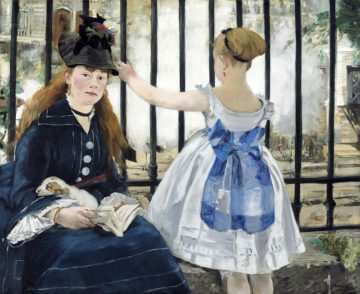Jackson Arn at The New Yorker:

The Lippis raise an important point, which “Manet/Degas” can’t help circling back to: great painters are not necessarily good painters. Art lovers, probably overcorrecting for “my kid could do that” philistinism, can be touchy about this, but in the case of Manet, a painter as great as he was technically dubious, it can’t be said too often. In much of his early work, near and far bump against each other—the rainbow in “Fishing” (ca. 1862-63) is as phony as the backdrop for a middle-school play—and his figures never really seem to be standing on solid ground, as though he’s cut them out of someone else’s painting. In the eighteen-sixties, Manet cut out a significant chunk of his own painting, “Episode from a Bullfight,” in response to criticism that he’d botched the perspective. It’s the kind of story you rarely find in art mythology: avant-gardists are supposed to be indifferent to critics, deliberate in their desecrations of tradition. In the case of Manet, the celebrated ur-modernist who made the world safe for flat, unfinished-looking art, it’s extra startling. Surely he, of all people, understood what he’d done.
more here.
